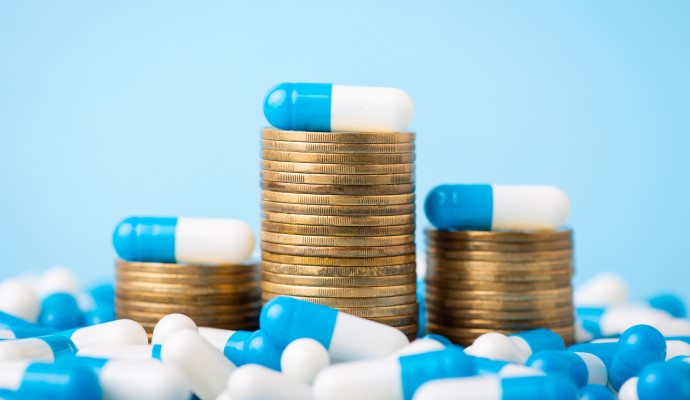How Many Medicare Part D Claims Are Subject to 340B Discounts?
The growth of Medicare Part D claims subject to 340B discounts was driven by increases in claims written by 340B-affiliated clinicians and prescribed by 340B pharmacies.

Source: Getty Images
- The share of Medicare Part D claims eligible for discounts in the 340B drug pricing program increased from 1.7 percent to 9.6 percent between 2013 and 2020, a study published in JAMA Health Forum indicated.
The 340B program allows certain healthcare entities to acquire outpatient prescription drugs at a discounted price. These entities often include disproportionate share hospitals, children’s hospitals, free-standing cancer hospitals, critical access hospitals, and federally qualified health centers.
Prescriptions must be written by a 340B-affiliated clinician and dispensed from an in-house or contract pharmacy to be eligible for 340B discounts.
Researchers used Medicare Part D claims from 2013 to 2020 to assess the share of pharmacy claims subject to a 340B discount. They focused on 9-digit national drug codes used by at least 1,000 Part D beneficiaries in their random sample.
The share of prescriptions written by a 340B-affiliated clinician increased from 9.4 percent in 2013 to 19.3 percent in 2020. The percentage of claims prescribed by 340B-affiliated clinicians that were filled by 340B pharmacies, referred to as the capture of 340B prescriptions by 340B pharmacies, grew from 18.4 percent to 49.9 percent between 2013 and 2020.
These increases led to the share of Part D claims subject to a 340B discount rising from 1.7 percent in 2013 to 9.6 percent in 2020.
Among the 30 therapeutic classes with at least 100,000 Part D claims in the sample, the antiviral class had the largest share of claims prescribed by 340B-affiliated clinicians at 28.1 percent in 2020. Similarly, they had the largest proportion of claims filled in 340B pharmacies (57.3 percent) and subject to a 340B discount (16.1 percent) in 2020.
Antiseptics (5.1 percent) and ophthalmic preparations (5.4 percent) had the lowest share of claims subject to a 340B discount.
Among the ten drugs with the highest Medicare Part D spending in 2020, the HIV treatment bictegravir/emtricitabine/tenofovir alafenamide (Biktarvy) was the only one with more than 50 percent of claims prescribed by 340B-affiliated clinicians. The cancer therapies imbrutinib (Imbruvica) and enzalutamide (Xtandi) were the next top drugs with the largest share of claims prescribed by 340B-affiliated clinicians.
The remaining top-spend drugs saw 340B prescribing increases of 9 percent to 11 percent in 2013 to 18 percent to 23 percent in 2020, the study noted. The rates of prescription filling by 340B pharmacies increased for all top-spend drugs except for imbrutinib, rising from 18 percent to 20 percent in 2013 to 46 percent to 62 percent in 2020.
The HIV treatment bictegravir/emtricitabine/tenofovir alafenamide had the highest proportion of 340B claims subject to a discount at 31.4 percent in 2020, followed by imbrutinib and enzalutamide. Among the remaining drugs, the rates of claims subjected to 340B discounts rose from 1 percent to 2 percent in 2013 to 9 percent to 12 percent in 2020.
The study findings demonstrate that the increase in prescriptions subject to 340B discounts is associated with the increasing capture of prescriptions by 340B pharmacies. The number of contract pharmacy arrangements has grown substantially from fewer than 1,000 in 2009 to 25,775 in 2022.
The growth in prescriptions originating from 340B covered entities may be due to increased hospital consolidation, as the share of physicians employed by hospitals or corporate entities rose from 26 percent to 69 percent between 2012 and 2020, researchers said.
The growing share of claims subject to 340B discounts can benefit underserved populations beyond providing care. For example, 340B eligibility is inversely associated with drug price increases.
However, 340B discounts have also been cited as a contributor toward drug shortages of inexpensive injectable drugs with a high 340B share, like generic cancer therapies. In addition, 340B discounts may drive hospital and healthcare provider consolidation.
